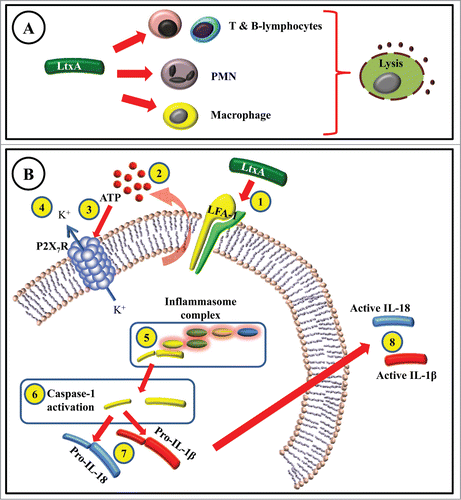Figures & data
Figure 1. Clinical presentation of localized aggressive periodontitis. A 16-year old female presenting with radiographic alveolar bone loss associated with bone defects (marked with arrows) and probing attachment loss at 2 permanent first molars, left upper premolars and lower incisors. Clinical photographs buccal view (A–C). Radiographs (D–F). The clinical presentation shows sparse plaque accumulation and localized gingival inflammation with 4–8 mm periodontal crevices with bleeding on probing in the affected regions. The results from the microbial sampling are presented in the inserted table and the sampled sites are indicated. Microbiological analysis, by cultivation technique, confirmed the presence of high levels of A. actinomycetemcomitans in the 3 lesions sampled. Diagnosis: localized aggressive periodontitis (LAgP).

Figure 2. (A) Interaction of A. actinomycetemcomitans leukotoxin (LtxA) with T-, B-lymphocytes, polymorphonuclear (PMN) leukocytes, and macrophages leads to cell lysis. (B) LtxA-induced cell death in macrophages involves several steps before the cell lysis occurs. LtxA binds to LFA-1 (1) and induces extracellular release of ATP (2). The released ATP binds to the P2X7-receptor (3) that subsequently causes efflux of potassium (4). The inflammasome complex is formed and activated (5), which promotes the cleavage and activation of a cysteine proteinase called caspase-1 (6). The cleaved caspase-1 is then responsible for activation (7) and release of abundant levels of active IL-1β and IL-18 (8).

